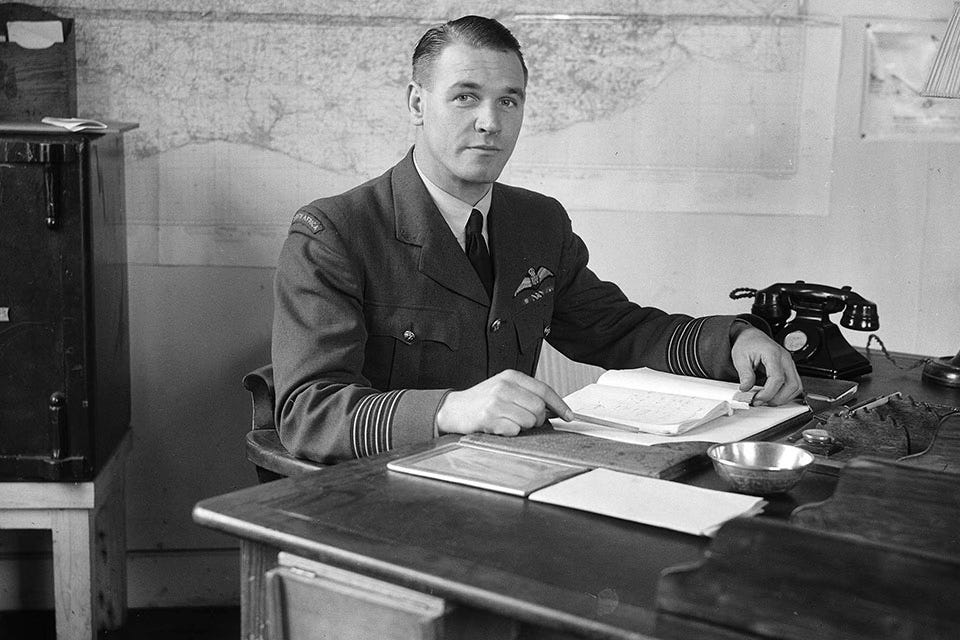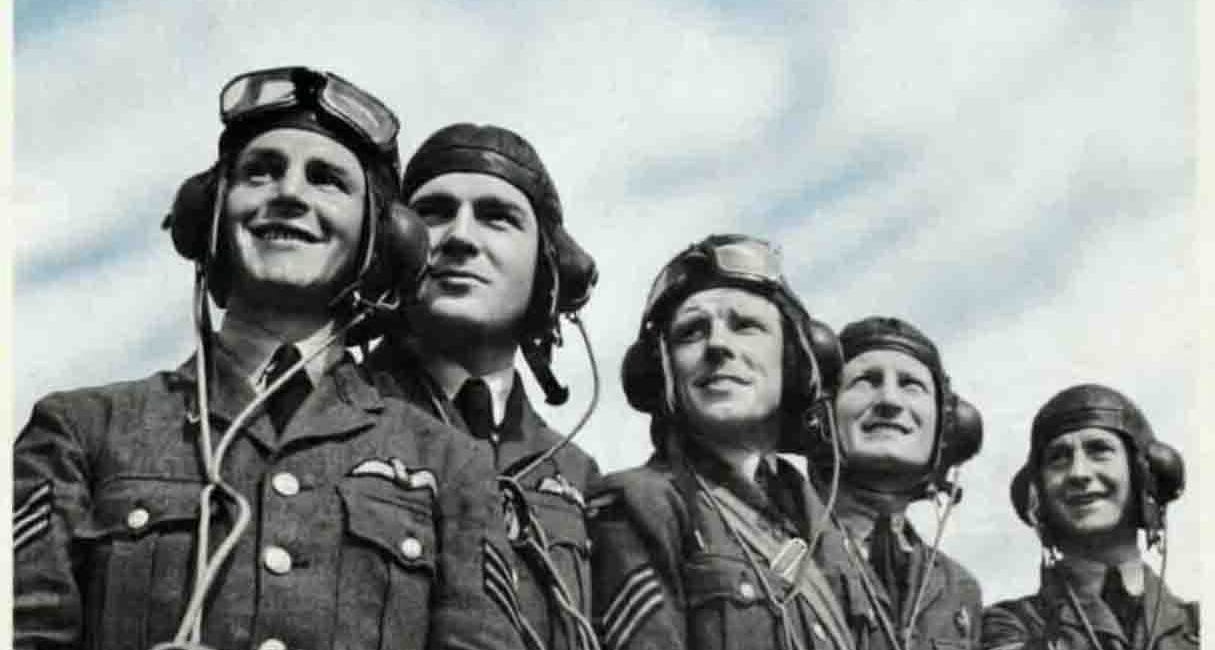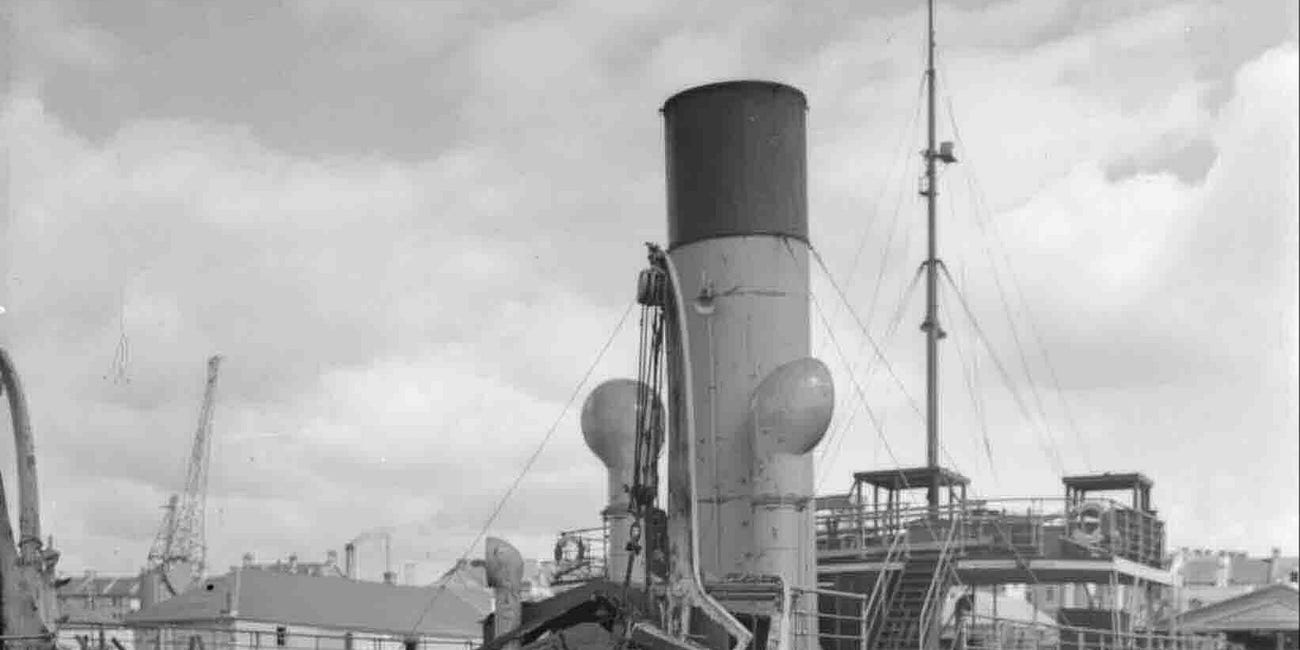'Sailor: Battle Of Britain Legend'
An excerpt from the biography of 'Sailor' Malan, the tough, uncompromising Spitfire Ace who led the development of new tactics for RAF Fighter Command

South African born Adolph ‘Sailor’ Malan had been a naval cadet at the age of fourteen where the sometimes brutal discipline and bullying must have been a formative influence on him. He eventually joined the Royal Navy Reserve in 1932 but transferred to the RAF in 1935 - acquiring the obvious nickname soon afterwards. He distinguished himself in the fighting over Dunkirk, shooting down five German planes and then consolidated his reputation by shooting down two bombers during a single night flight sortie when he took advantage of bright moonlight. His aggressive outlook soon brought him a reputation within Fighter Command.
First published in 2012 (and reissued twice since) Sailor: Battle Of Britain Legend: Adolph Malan tells the complete story with many excerpts from his combat reports as well as much context about the RAF at the time. The following excerpt is illustrative of Malan’s approach to both leadership and fighting the enemy:
With the opening round of the Battle of Britain in July, Sailor shared in the destruction of an He 111 on the 12th, was credited with the probable destruction of a Bf 109 on the 19th, and damaged another Bf 109 on the 25th.
Sunday, July 28th. Sailor was leading twelve Spitfires of 74 Squadron out of Manston in Kent when they encountered four staffeln of Messerschmitt 109s over the English Channel. The German fighters were from JG 51, commanded by their great ace, Werner Mölders, on his first day as their leader. Closing on the enemy aircraft, Malan selected the lead ele- ment of the formation, manoeuvred into position, fired and watched as his victim went down. Mölders then turned, got position on one of the Spitfires and quickly shot it down. It was the German commander’s 129th combat mission of the war and his twenty-sixth kill.
He then turned on Malan and in a few seconds was aligned for a shot, but Sailor reacted quickly, racking the Spitfire over as tightly as he could until he was able to bring the German into his own sights. He then raked the Messerschmitt with bullets, wounding the pilot. Mölders was able to nurse the badly damaged fighter back to his field at Wissant. The wounds to his leg were such that he was hospitalized and out of action for more than a month.
Flight Lieutenant Piers Kelly was posted to No 74 Squadron just as the Battle got underway. He was immediately impressed by Sailor, who always took a great interest in his new pilots, giving the inexperienced men all the advice he could in order to ease their transition to becoming fighter pilots. Kelly was extemely grateful for this consideration, knowing he needed all the help he could get. He found Sailor a firm disciplinarian who kept all of the squadron’s pilots on their toes and never let up on their training. He recalled that, to get all of the aircraft up above cloud while still in formation, Sailor would have them practise flying up through thick cloud in sections, climbing hard, their only reference point being the tailwheel of the Spitfire immediately ahead in the murk. It worked. Once through the cloud cover, Sailor was still leading and all twelve Spitfires were ready for action.
Malan and his pilots met the first German raid of August 13th—Adler Tag or Eagle Day—scrambling from Hornchurch at 5:55 a.m. It was out over the Thames Estuary where they ran into a large force of Dornier Do 17s which were heading for the English coast. The Dorniers were unescorted and Kelly recalled that the Tigers of 74 were so eager for a crack at the Germans that they were “elbowing each other out of the way.”
From the start of the Battle, Sailor was developing into a superb tactician as well. His advanced, enlightened, frequently unconventional ideas about air fighting soon drew the interest of his air force superiors and some high-ranking government officials, including Prime Minister Churchill. In July, Sailor began to disregard Fighter Command’s traditional formations and aerial combat tactics. He abandoned the standard three-aircraft vic formation in favour of the “finger-four” formation pioneered by the fighter pilots of the Luftwaffe before the start of the war.
He believed it essential that one had to get in quite close to an enemy aircraft before opening fire
He often sought conversations with the Air Vice-Marshal Keith Park, Air Officer-Commanding, 11 Group, on battle tactics. Sailor’s efforts ultimately changed Fighter Command into an up-to-date fighting force, ridding it of the old, set-pattern attacks and “tight display” formations of the 1930s. He believed it essential that one had to get in quite close to an enemy aircraft before opening fire at it, and had the guns of his Spitfire re-aligned and harmonised to a convergence distance of 250 yards instead of the recommended 400. Many pilots of his squadron, and others in Fighter Command, as well as in the fighter squadrons of the American air force, later followed his lead.
Always conscious too of Sailor’s approach to discipline and of his perfectionist view of all his men’s work, was the fitter who maintained his personal aircraft: “Having spent many hours patching up his Spitfire [to be] ready for the next trip, I could well realize the marvellous escapes he must have had. Although his Spitfire would come back battered each time, he would not part with it in exchange for a new and more modern one. His instructions to his crew were: ‘My machine has got to be serviceable. There can be absolutely no excuse.’ His engine had to go the first time, the radio-telephone just had to function even if his junior pilots’ radios failed at times. And his guns weren’t allowed to have stoppages.”
Sailor was promoted to Acting Squadron Leader and given command of 74 Squadron on August 8th 1940, and his victories continued to mount as the campaign raged. He ran the unit with the sort of strict, unwavering discipline that the pilots had come to expect: “Kick their arses once a day and I have the toughest bunch in Fighter Command.”
He levelled out at about 12,000 feet, when I gave him two two-second bursts at 100 yards range.
From Sailor’s combat report of August 8th:
“I was Dysoe Leader when squadron was sent off to intercept bandits approaching Dover at a reported height of 13,000 feet. I climbed on an E.N.E. course to 20,000 feet into the sun, and then turned down-sun towards Dover and surprised eight Me 109s at 20,000 feet flying in pairs, staggered line astern towards Dover. I ordered the squadron to attack. Some of them adopted the usual German fighter evasive tactics, i.e., quick half-roll and dive. On this occasion, as the air seemed clear of German aircraft above us, I followed one down and overtook him after he had dived 2,000 feet, opening fire during the dive at 200 yards’ range with deflection.
He levelled out at about 12,000 feet, when I gave him two two- second bursts at 100 yards range. He was in a quick half-roll and dived towards the French coast. I closed again to 100 yards’ range and gave him another two or three two-second bursts, when he suddenly burst into flames and was obscured by heavy smoke. This was at 4,000 feet, one mile N.W. of Cap Gris Nez.
I did not watch him go in, but flew back as fast as I could. I did not observe any of the engagements of the rest of the squadron. N.B.—Normally I have strongly advised all of the pilots in the squadron not to follow 109s on the half-roll and dive because in most cases we are outnumbered, and generally at least one layer of enemy fighters is some thou-sands of feet above. It was found that even at high altitudes there was no difficulty in overtaking E/A on diving, apart from the physical strain imposed on the body when pulling out.”
A.G. Malan, Squadron Leader, Commanding, No 74 Squadron
For much of the Battle, Sailor led the Tigers from the forward airfield at Manston in Kent, known as “Hell’s Corner”, where they would fly each day from Hornchurch.
Being closer to the French coast and the enemy airfields gave 74 Squadron a slightly better position, but they were also that much more vulnerable to strafing and bombing attacks by marauding German fighters and bombers. On one occasion when the pilots of 74 landed at Manston after having been involved in a particularly nasty fight with the enemy over the Channel, they were met by their ever-efficient riggers and fitters who quickly set to work preparing the Spitfires for their next sorties.
Conspicuously absent, however, were the station armourers, who were required to replenish the ammunition for the planes. Malan was uncharacteristically furious, an emotion he rarely displayed, but when it happened it was fearsome. He grabbed a belt of .303 ammunition and stormed into a nearby air raid shelter. There he hit the first armourer he found with it and yelled for them all to get out and re-arm the squadron. They were holding up the war effort and he, by God, was not having it.
©Philip Kaplan 2012, 2021, 2022 'Sailor: Battle Of Britain Legend: Adolph Malan'. Reproduced courtesy of Pen & Sword Publishers Ltd.
Affiliate Links
Recently on World War II Today ...
" Never in the field of human conflict..."
On the 20th August 1940 Churchill addressed Parliament on the state of the war. Once again his speech was a rhetorical masterpiece, taking the listener on a journey through the present difficulties to an eventual outcome that would see all Europe liberated. There was an unshakeable confidence in achieving this final full victory, whatever it might take.




